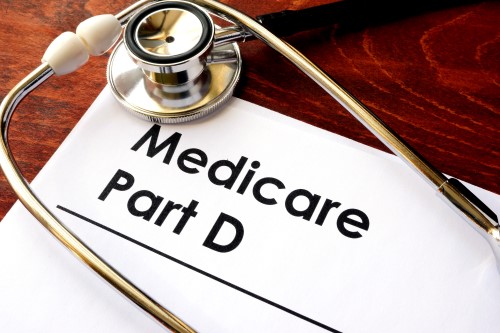As most people know, the federal government provides a program of basic health care insurance for older and disabled persons called Medicare. Practically everyone age 65 and older is eligible for Medicare, which consists of three main parts. Medicare Part A covers medically necessary care in hospitals and other facilities, such as skilled nursing facilities and hospices. Medicare Part B, the medical insurance part, covers physician’s services and a variety of other services and supplies. Then we skip a letter of the alphabet to Medicare Part D, which covers prescription drugs. Part D came into effect on January 1, 2006, and replaced the temporary drug discount program that was phased out in May 2006. If you have high prescription drug costs, you may wish to talk to your lawyer about signing up for Medicare Part D as part of your financial planning for retirement.
How Does Medicare Part D Work?
In order to get prescription drug coverage under Medicare Part D, Medicare beneficiaries must sign up for a Medicare Prescription Drug Plan. There are many different drug plans that are administered by different private entities, such as health insurance or managed care plans. Different plans have different premiums, deductibles, coinsurances, and benefits, within certain guidelines established by the government. You may also wish to consider which pharmacies are part of the plan, and whether the plan has a mail-order option. The average monthly premium for the standard Medicare plan is about $32.
The plans limit coverage to a specific list of drugs (called a formulary), which can change during the year. There are 112 different categories of illness, injury, and affliction, and every drug plan must cover at least two prescription drugs in each category. So, if you are taking a prescription drug, you should be able to find the drug you need if you compare plans in consultation with your doctor and shop carefully.
What Are the Options?
The following four options are available to Medicare beneficiaries:
- You can stay in traditional fee-for-service Medicare and enroll in a stand-alone prescription drug plan;
- You can join or remain in a Medicare Advantage plan (such as an HMO or PPO) and get all Medicare benefits through the plan;
- You can remain with current coverage from another source. If you receive drug coverage from another source, such as an employer, union, or Medigap policy, you will be notified by your current plan whether the current drug coverage will continue, and if it is at least as good as Medicare drug coverage. You will need to find out how the current drug plan works with Medicare before making a decision to enroll in a Medicare drug plan;
- You can decide not to enroll in a Medicare plan at this time and go without prescription coverage altogether. As explained below, you will face higher rates if you decide to enroll later.
Enrolling in Medicare Part D
Enrolling in Medicare Parts A and B is easy. Everyone who turns 65 and applies for Social Security is automatically enrolled in Medicare Parts A and B. Enrollment in Part D is different. It is not automatic and there is a separate monthly premium that you pay directly to the plan. This means that when you become eligible for Medicare, you need to take the affirmative step to enroll in a Part D plan that is available in your community.
If you are currently enrolled in Medicare and you do not have drug coverage at least as good as the Medicare drug plan, you will be penalized for late enrollment in Part D. You will have to pay one percent more per month on your premium for every month you waited to enroll after the initial enrollment period. So, if you are a Medicare beneficiary and you waited six months past the initial enrollment period to enroll, your monthly premium will always be six percent more than what others pay. This obviously creates a powerful incentive to enroll on time.
This premium penalty does not apply if you have comparable coverage from another source (such as a retirement health plan) that is certified as providing prescription drug coverage at least as good as Medicare drug coverage.
The Claims Process
For Part D, the claims process may vary, depending on the type of prescription drug plan in which you enroll, whether you receive the prescription from a local network pharmacy or mail order, and whether your medication is included on the plan’s formulary. However, you will probably have to pay the deductible or co-payment at the pharmacy, and the pharmacy will be paid by the plan.
The Standard Benefits
The table below shows the standard benefits provided under Medicare Part D. As explained, plans may differ.
| AMOUNT OF DRUG COSTS (per year) | WHO PAYS WHAT? |
|---|---|
| $250 or less | Plan pays zero Beneficiary pays initial deductible of $250 |
| $251 – $2,250 | Plan pays 75 percent Beneficiary pays 25 percent of drug costs. |
| $2,251 – $ 5,100 | Plan pays nothing. Beneficiary pays 100 percent percent of drug costs. |
| $5,100 and over | Plan pays 95 percent of drug costs Beneficiary pays 5 percent |


コメント